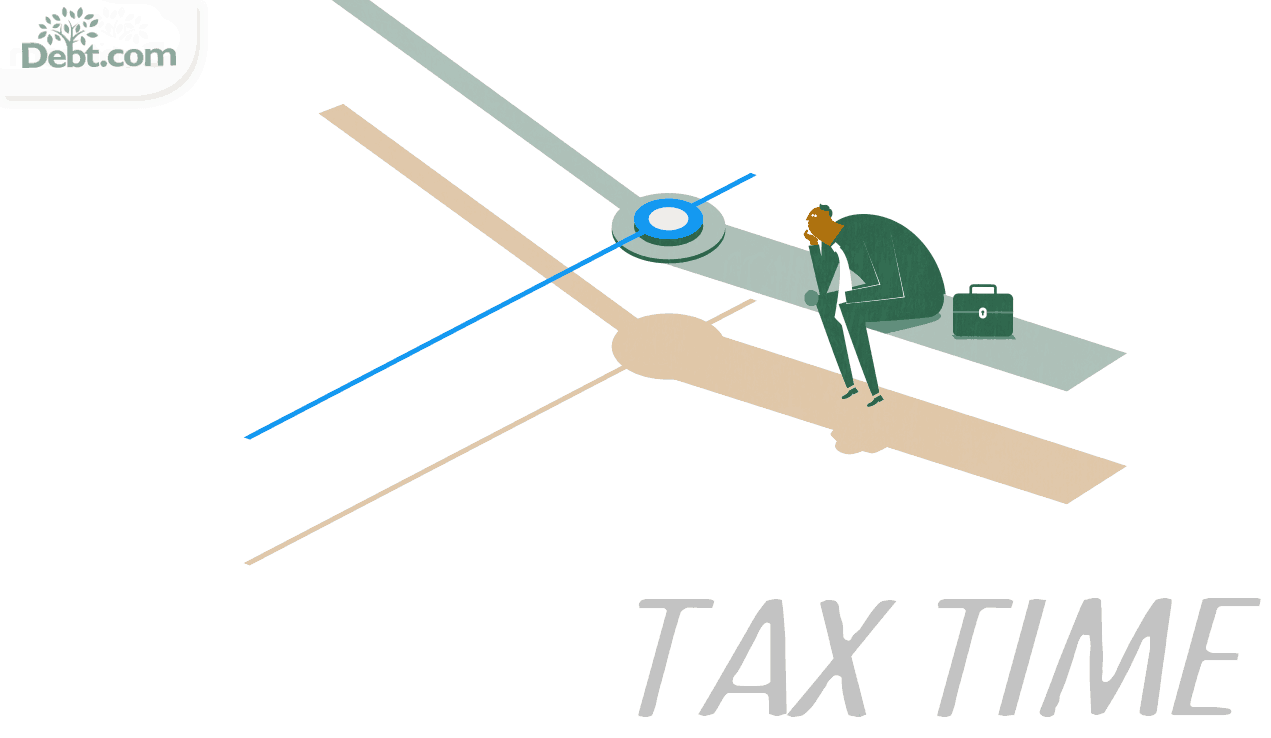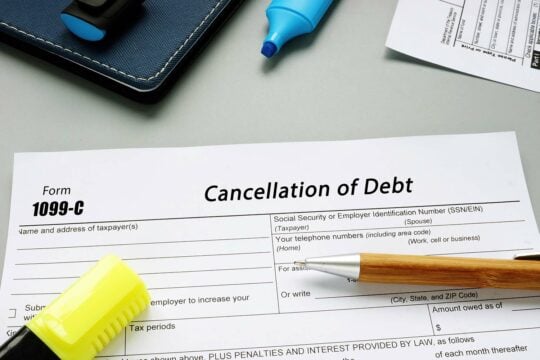It’s that time of year again! Federal income tax season officially opens on January 24, 2022. That’s the first day that taxpayers can file their taxes in hopes of getting their refund as early as possible.
Millions of Americans rely on their annual tax refund to pay off debt, make key purchases, and, unfortunately, just to cover daily expenses. Any delay in receiving a refund can cause big problems in many households. So, it’s important to know just how long you need to wait once you file.
Timeline for tax refunds
| Filing Method | How soon can you check your tax return status? | When can you expect your tax refund? |
|---|---|---|
| e-file | 24 hours | Usually within 21 days |
| File by mail | 4 weeks | 6-8 weeks |
How long will it take to get a tax refund?
The IRS states that most taxpayers receive their refunds within 21 days.[1]If you get your refund through Direct Deposit, you’ll get your refund the day the IRS issues the refund. In recent years, most filers have received their refunds in as little as 14 days.[2] But those results are not guaranteed and certain issues and factors can delay your refund.
Unlike last year when early government shutdowns threatened to completely derail tax season,[3] the start of this tax season has been relatively quiet and uneventful.
However, even the tiniest of errors could require a manual review of your return and that could lead to a delay in receiving your refund, according to Josh Zimmelman of Westwood Tax & Consulting. And though the IRS may be facing backlogs from last year, don’t expect to get away with not filing your taxes.
Definitely don’t expect the IRS backlog to work in your favor. Although they’re behind in processing tax refunds, they will still be tracking when your return arrives. Failure to file your tax return and pay your tax liabilities on time can result in multiple penalty fees and interest charges.
Josh Zimmelman, Managing Director of Westwood Tax & Consulting
January 24, 2022, is the first day that the IRS will begin processing tax year returns for individual filers. However, Free File is already open.
What is Free File and who qualifies for it?
This is a 100% free option that the IRS offers to any individual filer who makes less than $69,000 annually. The IRS highly encourages anyone who may qualify for Free File to take advantage, and they say most taxpayers are eligible.[5] This includes:
- Anyone whose Adjusted Gross Income (AGI) is less than $69,000 annually. AGI is the income you make once all deductions and tax credits are applied.
- Seniors and retirees usually qualify for Free File.[6]
- Most first-time filers and young taxpayers can use it.[7]
- Families with children who qualify for the Earned Income Tax Credit (EITC) also usually qualify for Free File.[8]
It’s important to note that Free File does not mean that you’ll file your taxes for free directly on the IRS’ website. Instead, you go to the Free File website and choose from one of 10 companies approved to offer the service.
If you use Free File before January 27, you can submit your tax returns. However, the IRS will not process any returns before that date. So, submitting early won’t get you your refund any faster.
If your refund is processed on the first day of tax season, then the earliest you could expect your Direct Deposit would be February 10.
How to check the status of your refund
The IRS makes it really easy to check your refund. They have three options:
- Check “Where’s my Refund?” online
- Download the IRS2Go app
- Call the IRS Refund Hotline at 800-829-1954
If you file income taxes online, you’ll need to wait 24 hours before they will give you a status. If you file by mail, wait four weeks. The information updates each day and you can check as often as you like online or through the app.
You’ll need:
- your Social Security Number
- filing status
- your exact refund amount
Statuses on Where’s My Refund?
The IRS allows you to track from when they officially acknowledge they received your return to when they finally send your refund.
Here are the statuses you can expect to see:
- return received – the IRS acknowledges they have your tax return and they’re currently processing it
- refund approved – the IRS finished processing your return and they approved your refund
- refund sent – if you used Direct Deposit, check your account; if you get a paper check by mail, expect your refund soon and keep an eye on your mailbox
If I receive a tax refund does that mean I’m safe from getting audited?
No. Receiving a tax refund does not mean that you won’t get audited on that year’s income tax return. In fact, most audits happen after refunds are issued. The IRS website states, “The IRS tries to audit tax returns as soon as possible after they are filed. Accordingly, most audits will be of returns filed within the last two years.” [7]
But IRS audits can go back up to three years. So, even if you received a refund on your 2016 or 2017 income tax returns, you could potentially still get audited. This is one of the reasons that it’s recommended you should keep three years of tax returns and receipts. That way, if you face an audit, you’re not scrambling to find your paperwork.
Seven reasons for a tax refund delay
If you count down and see your refund is late, follow the instructions to check the status of your return. If the status doesn’t move from return received to refund approved, then it may be a sign of a bigger problem. You may also be in a situation where the IRS says they sent your refund, but you don’t receive it.
Here are seven reasons why you may face an IRS tax refund delay.
#1: There’s an issue with your income tax return
If there are discrepancies between what you report on your return and what businesses report, it could delay your refund. Businesses also file taxes and report how much they pay employees, freelance contractors, and other owner-only companies. If the income you report doesn’t match, that’s a problem.
And realize that this doesn’t always happen intentionally. You could just make a clerical error, but it can still create a big hassle and lead to an audit. This is why Debt.com recommends working with a tax professional or at least use tax preparation software.
Learn how to choose the right tax software for you »
Issues with tax returns can also happen other than by accident. If you know that you should owe taxes and intentionally misreport it to avoid back taxes, it’s tax fraud. And your return may be under investigation and headed for an audit.
You may not even be aware of potential issues yourself. If your spouse files your taxes and either commits fraud or incurs tax debt without your knowledge, you can apply for innocent spouse relief. This will get you out of any IRS penalties, owing back taxes and potential court charges related to your return.
Think you may be facing issues with back taxes to the IRS? Debt.com can connect you to certified tax attorneys and tax debt resolution specialists today.
#2: Someone else got to your tax refund first
If someone gets their hands on your Social Security number, they can commit tax identity theft. This is where someone else files a return in your name and gets your refund. When you try to file, the IRS usually informs you that they already received your return and sent your refund.
The risk of tax identity theft increases the later you file. If you wait until the last minute (or always file extensions), you face a greater risk of tax ID theft.
Understand tax identity theft and what you can do if you’re a victim »
#3: Someone intercepted your refund and garnished it
Garnishment doesn’t just refer to wage garnishment, there’s also something called a tax intercept. This happens when a government agency orders the IRS to garnish your tax refund. This can happen for a few reasons:
- You owe back child support and the court orders the garnishment; they take your refund to pay the child support arrears.
- The U.S. Department of Education ordered the tax intercept because you have defaulted student loans.
- If you owe back State Taxes and they have an intercept agreement with the IRS.
Basically, any unsecured debt that you incur through contact with the federal government could result in a tax intercept. Unsecured debts refer to any debt that’s not backed by collateral, which includes anything from student loans to court fines.
Federal student loans in default are the most common reason for tax intercepts. If any government-backed student loan lapses into default and you ignore communications from the loan servicer, the D.O.E may order the tax intercept. This is one reason why it’s crucial to work to find a solution for your federal student loan debt.
Even if you can’t afford your federal student loan payments right now, Debt.com can connect you with solutions that may help you avoid tax refund intercepts.
#4: Your routing information was wrong
Not every reason for a delayed tax refund is as dramatic as the ones we list above. Sometimes it’s a simple clerical error. If you use Direct Deposit for your tax refund, the delay may be a routing number issue.
Direct Deposit requires two numbers:
- Your bank account number
- The bank or credit union’s routing number
If you put down either of those numbers wrong, you won’t receive your refund. First, check the status of your refund. If it says the refund was already sent, contact your financial institution. They may be able to locate the funds and return them to the IRS. Then the IRS will issue you a paper check by mail (which means more waiting for your tax refund).
If your bank can’t locate the funds, then you must file Form 3911 with the IRS. It’s basically an official statement that you have not received your refund. It starts the process that will hopefully result in the IRS issuing you a paper check by mail.
#5: You filed early, but claimed certain tax credits
The new tax reform law requires the IRS to delay disbursement on any refunds that claim two key tax credits. The IRS cannot send cut you a refund check until after February 15 if you claim the Earned Income Tax Credit (EITC) or Additional Child Tax Credit (ACTC).
So, if you file early and claim either of those credits, you may not get your Direct Deposit within the normal 21 days. The earliest you could expect your Direct Deposit would be February 27 and it could take up to March 8.[6]
#6: You picked a peak IRS filing window
If you file extremely early (i.e. January 28) OR extremely late (i.e. April 15), then your refund may be delayed due to the sheer volume of returns the IRS receives. Returns received during peak filing windows tend to take longer to process because the IRS simply lacks the manpower to process everyone’s returns at once. The peaks occur at the start of tax season and on the last day to file.
In this case, you just need to be patient. Use the IRS tools to make sure your return is getting processed and that your refund gets sent. This delay should only take a few days over the target 21 on Direct Deposit.
#7: You file income taxes by mail
As you can see from the timeline for tax refunds, processing on paper returns and cutting paper checks take longer. Snail mail is simply slower than electronic processing, so it takes longer for the IRS to receive your return AND get you your refund.
You need to wait for one month just to check the status of your return. That means the earliest you can start checking is February 28 if you send your returns in on the first day of tax season this year. You shouldn’t expect your refund until mid- to late-March. And that’s only if you file on the earliest date possible.
This is a big advantage for electronic filing. So, if you need to get your refund fast this year, then you need to e-file. If you use a tax preparer, almost all of them e-file, but ask your preparer, just to make sure.
Sources:
[2] https://smartasset.com/taxes/tax-refund-delay
[3] https://www.cnn.com/2019/01/15/politics/irs-recalls-employees/index.html
[4] https://www.irs.gov/newsroom/irs-opens-2020-filing-season-for-individual-filers-on-jan-27
[5] https://www.irs.gov/newsroom/irs-most-taxpayers-eligible-for-free-federal-and-free-state-tax-return-preparation
[6] https://www.irs.gov/newsroom/irs-free-file-helps-seniors-and-retirees-do-their-taxes-for-free
[7] https://www.irs.gov/newsroom/irs-free-file-ideal-for-young-and-first-time-filers
[8] https://www.irs.gov/newsroom/irs-free-file-can-save-families-money-find-tax-benefits-all-for-free







